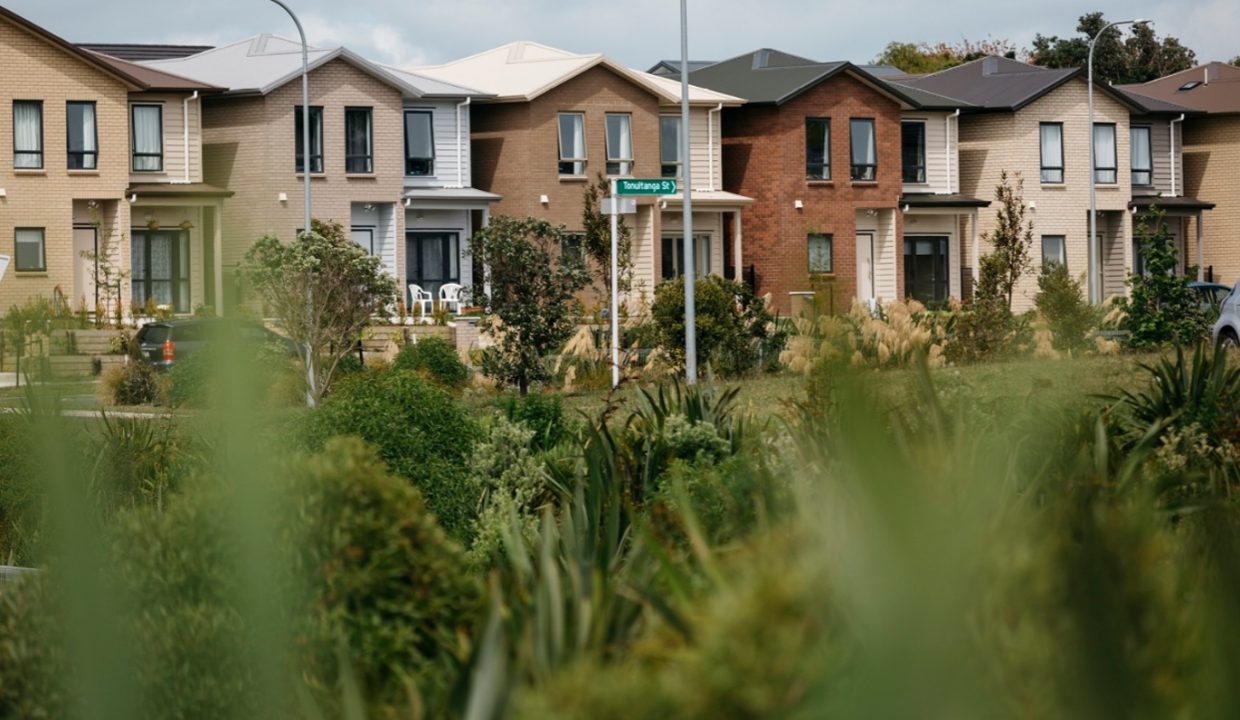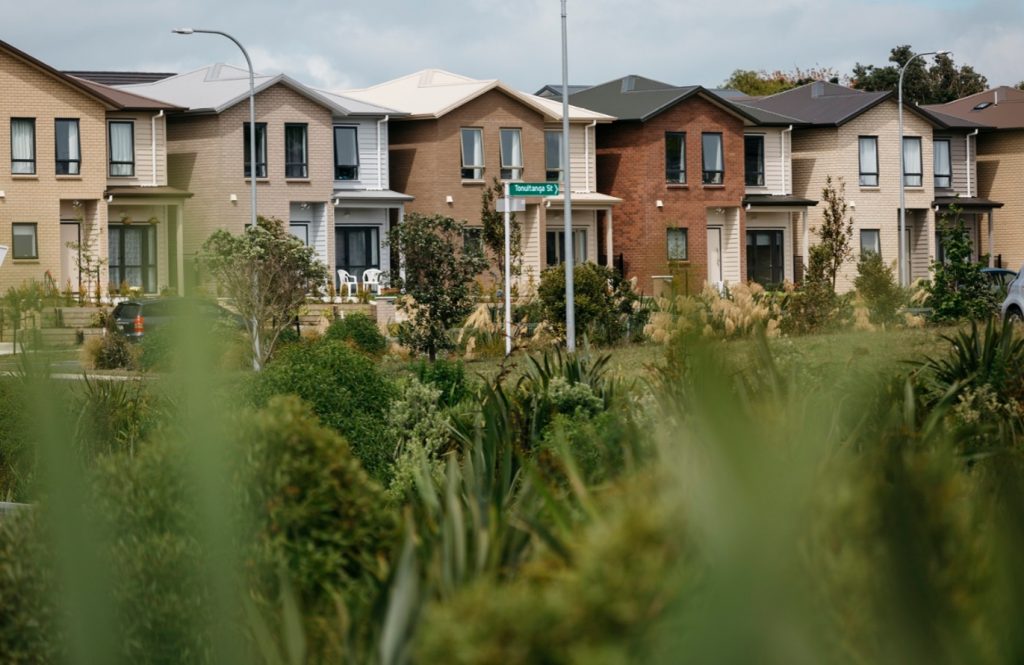
뉴질랜드 주택 개발 시장, 개발 기여금 급등과 미분양 위기에 직면
NZ Housing Developers Face Twin Challenges: Soaring Development Fees and Unsold Inventory
Sluggish buyer sentiment and mounting costs demand cautious strategy, industry warns
New Zealand’s housing development market is showing tentative signs of recovery, yet fresh headwinds threaten to stall momentum. While construction costs and supply chain disruptions have begun to stabilise, the sharp rise in unsold properties and an unprecedented surge in local governments’ Development Contributions are emerging as major obstacles for developers.
According to industry sources, development contributions in key regions, including Auckland, have skyrocketed—rising by as much as 40%. The result: developers now face additional costs ranging from tens of thousands to over a hundred thousand New Zealand dollars per home. In Auckland’s Tamaki area, for instance, fees have surged from NZ$31,000 to NZ$119,000, while Inner Northwest rates have jumped from NZ$25,000 to NZ$98,000. This escalation is forcing developers to either redesign projects or undertake aggressive cost-cutting to preserve profitability.
Henry Chen, Head of Lending at Vincent Capital, notes that despite stabilising construction costs, “a glut of unsold inventory and a slow rebound in consumer confidence continue to weigh heavily on the sector.” He adds that conservative planning and thorough project assessment have become more essential than ever.
Although hopes for interest rate cuts remain high, the sluggish pace of broader economic recovery has left potential homebuyers hesitant, delivering a blow to new residential sales across the board.
Compounding these challenges is a growing trend among builders to engage in ‘underquoting’—submitting unrealistically low bids to win contracts. While this may seem attractive on paper, such practices often lead to unforeseen cost overruns or disputes mid-project. Industry veterans warn that inexperienced developers are particularly vulnerable to such pitfalls.
To mitigate these risks, Vincent Capital employs an internal database and analysis of hundreds of past projects to detect abnormally low estimates and scrutinise contract payment terms with precision.
Chen further points out that even within Auckland, supply-demand dynamics vary sharply by location and property type. “In areas oversupplied with terrace housing, we tread cautiously. Our focus is on markets with demonstrable end-user demand,” he said. “Uniform lending criteria no longer apply—tailored strategies based on local market knowledge are critical.”
In light of high-profile losses stemming from poor design and inadequate project oversight in recent years, financial institutions are now scrutinising developers more closely—evaluating past performance, crisis management capability, marketing plans and pricing strategies—before approving funding. Conservative Loan-to-Value Ratios (LVRs) are also increasingly applied.
Vincent Capital maintains close collaboration with developers, conducting regular site visits and maintaining real-time communication to detect and respond to risks early.
“In a climate marked by rising development fees and fragile demand, only those with realistic business plans grounded in experience and supported by trustworthy financial partners will succeed,” Chen concluded. “Now is the time for discipline, insight, and above all, strategy.”

뉴질랜드 주택 개발 시장, 개발 기여금 급등과 미분양 위기에 직면
미분양 증가·소비 심리 위축… 개발업계 “철저한 리스크 관리 필수”
뉴질랜드 주택 개발 시장이 서서히 회복세를 보이고 있지만, 새로운 변수들이 발목을 잡고 있다. 최근 건설비와 자재 공급망 문제는 어느 정도 안정 국면에 접어들었지만, 미분양 주택 증가와 함께 지방정부의 ‘개발 기여금(Development Contributions)’ 폭등이 개발업계에 큰 부담으로 작용하고 있다.
건설 업계에 따르면, 오클랜드를 비롯한 주요 개발 지역에서 개발 기여금이 최대 40%까지 급등하며, 주택 한 채당 수만 달러에서 많게는 십만 달러에 이르는 추가 비용이 발생하고 있다. 오클랜드 타마키 지역의 경우 개발 기여금이 기존 3만1천 달러에서 11만9천 달러로 치솟았으며, 노스웨스트 지역 역시 2만5천 달러에서 9만8천 달러로 급증한 바 있다. 이로 인해 수익성을 기대하던 프로젝트들도 재설계나 비용 절감 없이는 사업 지속이 어려운 상황이다.
금융회사 Vincent Capital의 헨리 첸(Henry Chen) 대출 총괄은 “건설비 안정에도 불구하고, 미분양 물량이 여전히 많고 소비자 심리 회복도 더디다”며 “개발업자들은 보수적인 접근과 철저한 사업 검토가 절실하다”고 지적했다.
시장에서는 금리 인하 기대감이 고조되고 있지만, 전반적인 경기 회복이 더디면서 주택 구매를 결정하려는 소비자들의 발걸음은 여전히 무겁다. 이는 신규 분양 시장에도 직격탄이 되고 있다.
한편, 건설비 안정세에 따라 시공사 간 경쟁이 치열해지면서 ‘언더쿼팅(underquoting)’ 현상도 증가하고 있다. 이는 시공사가 실제보다 낮은 금액으로 견적을 제시해 계약을 따낸 뒤, 공사 중 추가 비용을 청구하거나 분쟁으로 이어지는 사례를 말한다. 경험이 부족한 개발업자일수록 이런 위험에 노출되기 쉬워 각별한 주의가 요구된다.
Vincent Capital은 자체 데이터베이스와 수백 건의 과거 프로젝트 분석을 통해 비정상적으로 낮은 견적을 사전에 걸러내고, 계약서 상의 지급 조건까지 철저히 검토하며 위험을 최소화하고 있다.
첸 총괄은 “오클랜드 내에서도 테라스 하우스처럼 공급 과잉 상태인 지역은 신중하게 접근하고, 실수요가 뚜렷한 지역 위주로 전략을 짠다”고 밝혔다. 그는 이어 “획일적인 대출 기준보다는 시장 특성을 반영한 맞춤형 전략이 필수”라고 강조했다.
최근 몇 년간 설계 부실과 현장 관리 미흡으로 인해 막대한 손실을 본 개발사들이 속출한 가운데, 금융기관들은 개발업자의 과거 실적과 위기 대응 능력, 그리고 마케팅 전략까지 면밀히 들여다보며 보수적인 대출비율(LVR)을 적용하고 있다.
Vincent Capital은 정기적인 현장 점검과 실시간 소통을 통해 위험 신호를 조기에 감지하고, 필요 시 대안을 제시하며 개발업자들과의 긴밀한 협업 체계를 유지하고 있다.
첸 총괄은 “개발 기여금 급등과 수요 둔화 등 복합적인 리스크를 정확히 인식하고, 이를 반영한 현실적인 사업 계획만이 성공할 수 있다”며 “지금은 무엇보다 경험과 데이터, 그리고 신뢰할 수 있는 금융 파트너쉽이 절실한 시점”이라고 말했다.
